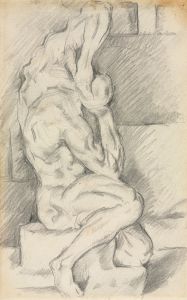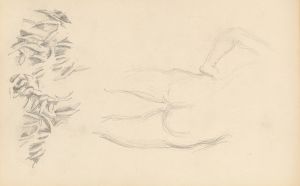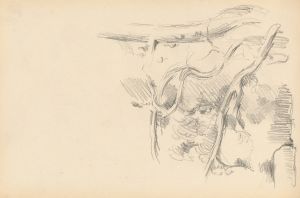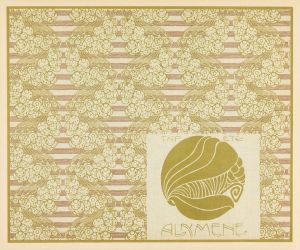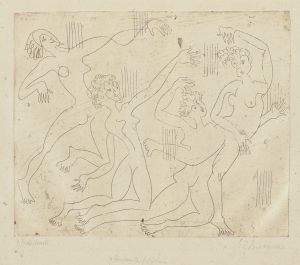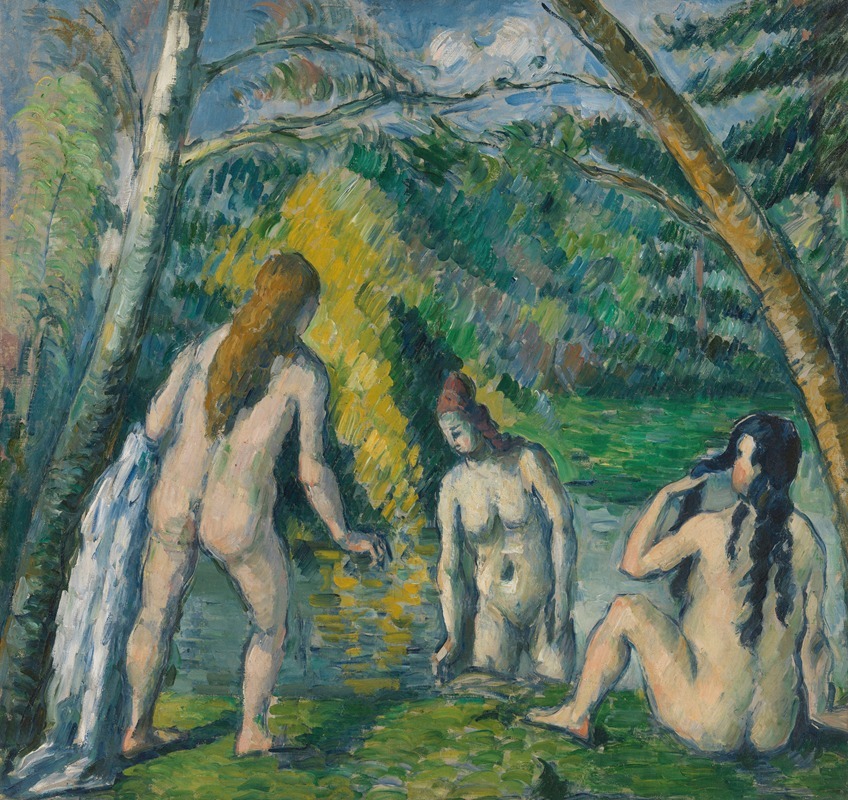
Trois baigneuses
A hand-painted replica of Paul Cézanne’s masterpiece Trois baigneuses, meticulously crafted by professional artists to capture the true essence of the original. Each piece is created with museum-quality canvas and rare mineral pigments, carefully painted by experienced artists with delicate brushstrokes and rich, layered colors to perfectly recreate the texture of the original artwork. Unlike machine-printed reproductions, this hand-painted version brings the painting to life, infused with the artist’s emotions and skill in every stroke. Whether for personal collection or home decoration, it instantly elevates the artistic atmosphere of any space.
"Trois baigneuses" (Three Bathers) is a painting by the French Post-Impressionist artist Paul Cézanne. Created around 1879–1882, this work is one of Cézanne's many explorations of the theme of bathers, a subject that he revisited frequently throughout his career. The painting is executed in oil on canvas and is relatively small in size, measuring approximately 49.5 x 55.5 cm (19.5 x 21.9 inches). It is currently housed in the Petit Palais, the City of Paris Museum of Fine Arts.
The composition of "Trois baigneuses" features three nude female figures standing together in a natural outdoor setting. The figures are depicted in a simplified and somewhat abstracted manner, with Cézanne focusing on the interplay of shapes, colors, and forms rather than on precise anatomical detail. The background, which suggests a landscape with trees and water, is rendered in Cézanne's characteristic style, with loose brushstrokes and a harmonious palette of greens, blues, and earthy tones.
Cézanne's treatment of the human figure in this painting reflects his broader artistic goals of moving beyond the naturalism of earlier art movements. He sought to capture the underlying structure and essence of his subjects, often reducing them to geometric forms and emphasizing the relationship between the figures and their environment. This approach would later have a profound influence on the development of modern art, particularly on movements such as Cubism.
The theme of bathers was a recurring motif in Cézanne's oeuvre, and it allowed him to explore the human form in relation to nature. "Trois baigneuses" is considered an important example of this theme, showcasing Cézanne's innovative approach to composition and his departure from traditional academic conventions. The painting's intimate scale and harmonious design have made it a notable work within Cézanne's body of work.
"Trois baigneuses" has been praised for its timeless quality and its ability to convey a sense of unity between the figures and their surroundings. It is often cited as an example of Cézanne's ability to bridge the gap between the representational art of the 19th century and the abstract tendencies of the 20th century. The painting remains a significant piece in the history of Western art, reflecting Cézanne's pivotal role in the transition from Impressionism to modernism.











